No products in the cart.

1. Introduction:
Think AI is only for big corporate farms with deep pockets? Think again. In 2025, artificial intelligence is no longer a luxury, it’s a lifeline, especially for small and mid-sized farms across the U.S. While traditional farming methods struggle to keep pace with rising costs and unpredictable weather, affordable AI tools are stepping in to level the playing field.
Today’s affordable AI farming tools offer real-time crop monitoring, predictive weather analytics, precision irrigation, and even pest detection, all without breaking the bank. These tools are reshaping American agriculture, making smart farming more accessible than ever.
But here’s the challenge: many farmers still believe AI is too complex or expensive to adopt. This guide aims to break down that misconception by highlighting low-cost, easy-to-use AI technologies that can immediately boost productivity, cut waste, and improve yields.
Whether you’re managing a small cornfield in Iowa or a mixed-crop operation in Georgia, there’s an affordable AI solution that fits your needs, and your budget.
It’s time to farm smarter, not harder. Let’s explore the tools that can make it happen.
2. Why AI Matters for U.S. Farmers in 2025
American agriculture is undergoing a transformation, one where smart farming technology is no longer optional but essential. In 2025, the pressure on U.S. farmers is higher than ever. From climate volatility and soil degradation to rising labor and input costs, traditional practices are struggling to keep up. This is where artificial intelligence (AI) is proving to be a game-changer.
AI in U.S. agriculture offers more than just automation. It powers precision farming, allowing growers to monitor soil health, predict pest outbreaks, and optimize planting schedules using real-time data. These digital agriculture tools help farmers make informed decisions that lead to higher yields, reduced waste, and better resource management, all while keeping costs under control.
What’s encouraging is that many of these sustainable agtech tools are now designed specifically for small and mid-sized farms. Thanks to advancements in AI and machine learning, tools that were once costly and complex have become user-friendly and affordable.
Farmers using AI-driven crop analysis apps or smart irrigation systems are seeing measurable gains in efficiency and profit margins. And with support from initiatives by the USDA and other organizations, even tech-cautious farmers are beginning to explore what digital farming can do for them.
The takeaway? AI isn’t just for Silicon Valley-backed megafarms anymore. It’s now within reach for the everyday American farmer who wants to stay competitive in a fast-evolving industry.
Smart farming starts with smart tools, and those tools are now affordable.
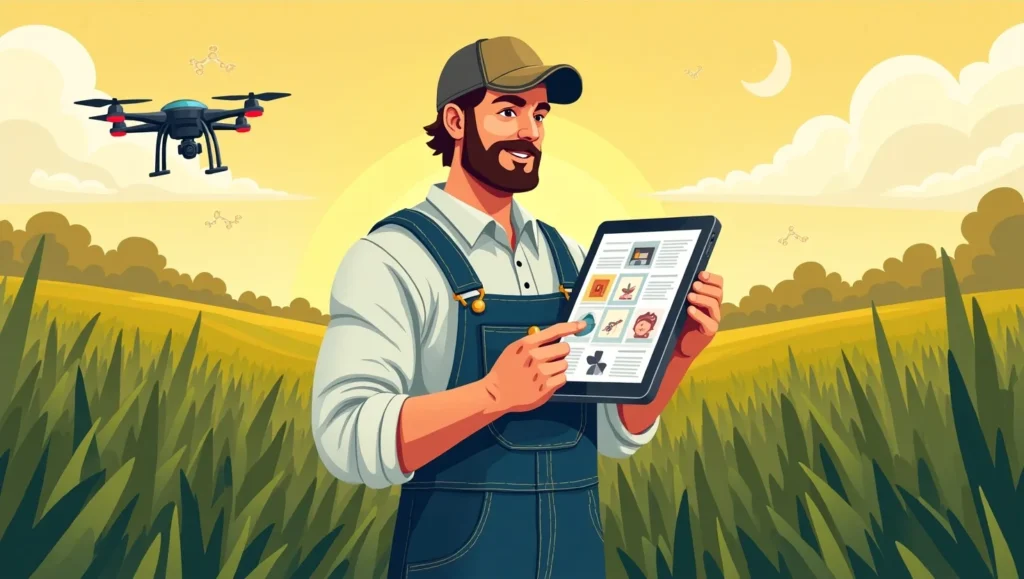
3. Criteria: What Makes an AI Tool “Affordable”?
When we talk about affordable AI farming tools, we’re not just referring to the price tag. Affordability in agtech means getting strong value for money, where the tool’s performance outweighs the cost and delivers measurable returns on investment (ROI).
First, look at the initial cost vs. long-term savings. A $200 smart sensor that prevents $1,000 in crop loss is not an expense, it’s an asset. Similarly, AI-driven irrigation systems that reduce water usage by 30–50% can pay for themselves within a season.
Next, consider ease of use and accessibility. Many U.S. farmers lack the technical background to operate complex systems. Affordable AI tools are those that offer intuitive interfaces, mobile access, and minimal training requirements. A tool that sits idle due to its complexity isn’t affordable, no matter how cheap it was upfront.
Another factor is scalability. Can the tool grow with your farm? Budget-friendly doesn’t mean basic. The best low-cost precision farming tools provide modular features so farmers can upgrade as needed without full replacement.
Lastly, factor in support and integration. Affordable AI Farming tools should easily plug into existing farming operations, whether that means syncing with your tractor’s GPS or integrating with weather monitoring platforms.
Affordability isn’t about going cheap, it’s about choosing tools that deliver big impact with minimal investment.
Knowing what to look for helps farmers make smarter choices that stretch budgets without sacrificing quality or performance.
4. Top 7 Affordable AI Tools for Farmers in 2025
AI-powered tools have become more accessible, and these seven options prove that high-tech doesn’t have to mean high-cost. Each of these tools offers real value for small and mid-sized U.S. farms in 2025.
1. Farmonaut Satellite Monitoring
A budget-friendly platform using satellite imagery to monitor crop health, soil conditions, and water stress. It’s ideal for precision farming at a fraction of the cost.
2. Plantix
This free AI-driven mobile app helps farmers diagnose crop diseases instantly by simply uploading a photo, perfect for early pest detection and treatment advice.
3. Taranis
Aerial imagery and AI analytics combine to provide real-time crop scouting, weed detection, and nutrient tracking. It’s scalable and cost-effective.
4. Agremo
An affordable tool that analyzes drone images for yield prediction, plant counting, and stand establishment, supporting smarter planting decisions.
5. Climate FieldView
This digital farming solution gathers data from tractors, drones, and sensors to make real-time recommendations, offering strong ROI for its cost.
6. CropX
A soil sensor and analytics platform that improves irrigation efficiency. Farmers report water savings and improved yields with minimal upfront costs.
7. Ecorobotix
A solar-powered, AI-driven weed control robot that reduces herbicide use by up to 95%, making it both eco-friendly and cost-effective.
Affordable agtech isn’t just available, it’s already transforming fields across America.
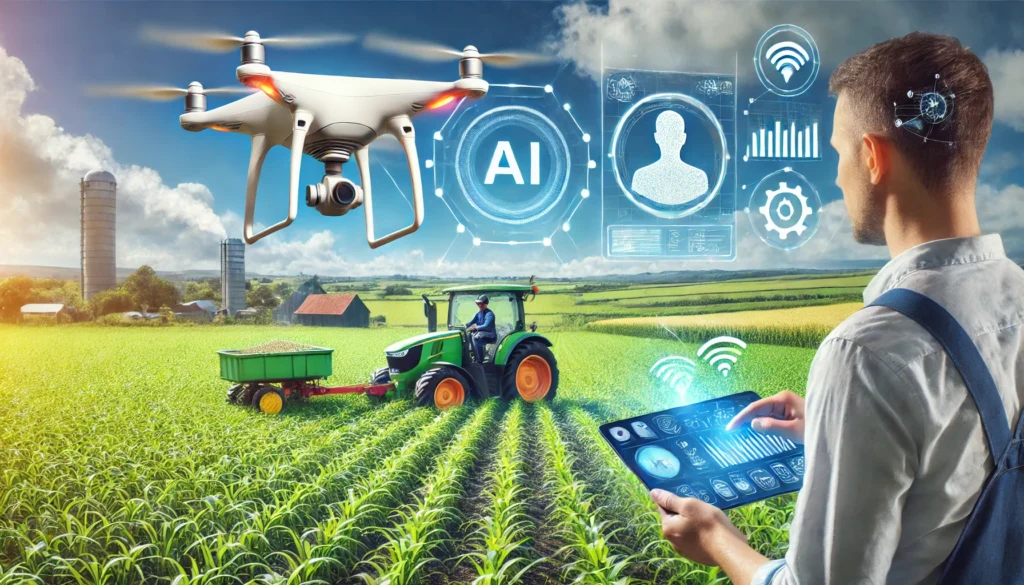
5. Real-Life Success Stories of U.S. Farmers Using AI on a Budget
Behind every smart farming trend are real farmers making it work, often on limited budgets. These success stories prove that affordable AI tools are driving real change across the U.S.
Case 1: Iowa Corn Farmer Cuts Costs with CropX
James, a mid-sized corn farmer in Iowa, installed CropX soil sensors across his fields. Within one season, he reduced water usage by 35% and improved root health, resulting in a 12% yield increase. The investment paid off in under six months.
Case 2: Georgia Vegetable Grower Uses Plantix for Fast Diagnosis
Emily runs a family vegetable farm in Georgia. With limited access to agronomists, she turned to the Plantix app to diagnose wilting in her lettuce crops. The AI-powered photo scan identified root rot, saving her thousands in potential crop loss.
Case 3: Indiana Soybean Farmer Leverages Farmonaut
In West Lafayette, Indiana, a small soybean farmer integrated Farmonaut for satellite crop monitoring. The tool identified nitrogen deficiencies early in the season, allowing timely intervention. He estimates a 20% improvement in output compared to previous years.
These farmers didn’t need massive budgets or tech teams. They simply used the right tools, intuitive, accessible, and affordable, to improve their operations.
Smart farming isn’t reserved for big ag, it’s powering America’s heartland, one AI tool at a time.
6. How to Choose the Right Tool for Your Farm’s Needs
Selecting the right AI tool for your farm can feel overwhelming with so many options available. However, by focusing on your unique needs, you can identify the solution that provides the best return on investment. Here’s a simple approach:
1. Assess Your Farm’s Scale
Smaller farms may benefit from mobile apps like Plantix or CropX, which offer affordable AI solutions with minimal setup. Larger farms might look for more comprehensive systems like Farmonaut, which offers satellite-based monitoring and scalability.
2. Identify Key Farming Challenges
Are you dealing with water conservation, pest control, or soil health? Choose AI tools that target your specific problem. For instance, AI-powered irrigation systems like Climate FieldView can help with water optimization, while Plantix can diagnose crop diseases efficiently.
3. Consider Ease of Use
Farmers don’t have time for complex systems. Opt for tools with user-friendly interfaces, mobile access, and solid customer support. Tools that offer intuitive features or free trials, like Taranis or Agremo, make it easier to evaluate their effectiveness without a significant investment.
4. Evaluate Long-Term Benefits
While upfront costs are important, focus on long-term savings. AI tools should help reduce labor costs, minimize resource waste, and enhance yield predictions. Look for tools with features that evolve with your farming practices.
Choosing the right AI tool is about aligning your farm’s needs with the technology that drives growth, efficiency, and sustainability.
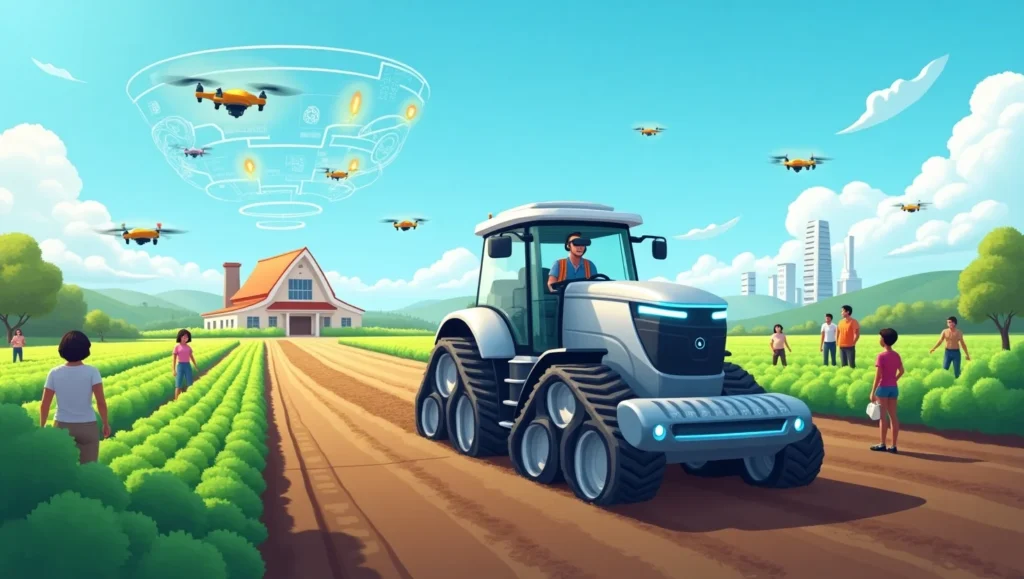
7. Conclusion: The Future of Affordable AI Tools in Farming
The future of farming lies in embracing affordable AI tools that drive efficiency, sustainability, and productivity. As 2025 approaches, U.S. farmers are poised to make technology a cornerstone of their operations, regardless of farm size or budget.
Affordable AI tools like precision irrigation, pest detection, and crop health monitoring are not just for the tech-savvy, they’re becoming integral to the survival of small and mid-sized farms. With increasing support from government initiatives and tech companies, farmers now have access to tools that offer more than just automation, they offer smarter, more sustainable practices that directly benefit their bottom line.
In the coming years, we can expect these tools to evolve, becoming even more accessible, more precise, and even easier to use. AI-driven farming solutions will be tailored to the specific needs of different crops and farm environments, making it possible for every farmer to harness the full potential of digital agriculture.
Whether you’re planting corn in Nebraska or cultivating citrus in Florida, the future of farming will be powered by AI. The key is to start now, choosing the right tools, optimizing your processes, and reaping the rewards of smarter, more efficient farming practices.
The future of farming is already here. And it’s affordable, accessible, and ready to revolutionize how you farm.
FAQs:
Q1. What are the most affordable AI tools for small U.S. farms in 2025?
This question addresses cost-effective AI options tailored to small-scale farming.
Q2. How can AI help farmers save money and increase efficiency?
Focuses on the practical benefits and cost savings AI brings to farming operations.
Q3. Are AI tools easy for farmers without technical expertise to use?
A common concern regarding user-friendliness and accessibility of AI tools.
Q4. What is the return on investment (ROI) for AI tools in agriculture?
Farmers want to know how AI will financially benefit them in the long term.
Q5. How do AI tools help with sustainable farming practices?
This query explores how AI can support eco-friendly, sustainable farming solutions.
Related Articles
Farm Automation
How AI Is Helping Organic Farmers Stay Competitive
1. Introduction: Organic farming has always been admired for its sustainability, purity,...
Farm Automation
AI Farm Assistants: Are Virtual Advisors the Future of Agriculture
1. Introduction: Imagine having a personal farm assistant who never sleeps, analyzes...
Farm Automation
How U.S. Farmers Use AI to Monitor Weather and Make Better Decisions
1. Introduction: For generations, U.S. farmers have relied on intuition and traditional...
Farm Automation
Can AI Replace Manual Labor on U.S. Farms? Here’s What to Know
1. Introduction: Imagine a cornfield in Iowa where machines handle everything from...
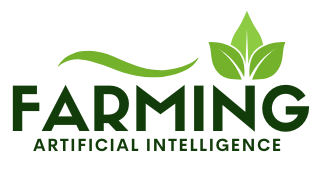
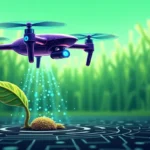
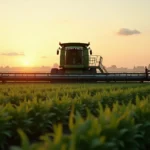


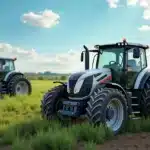



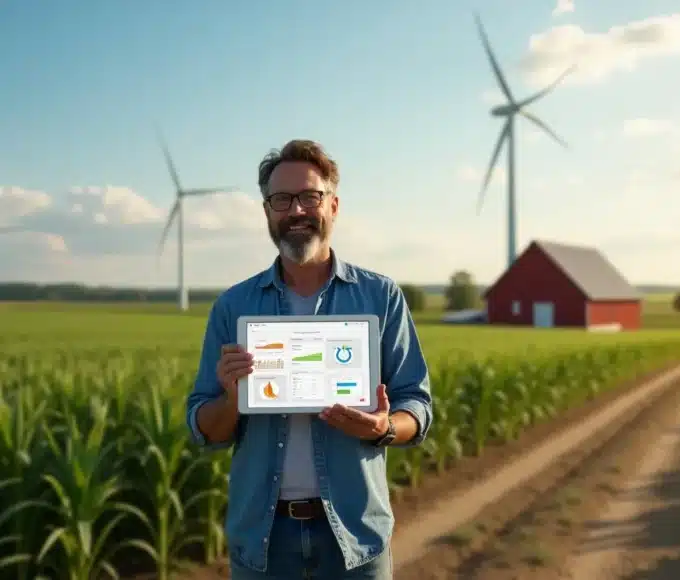
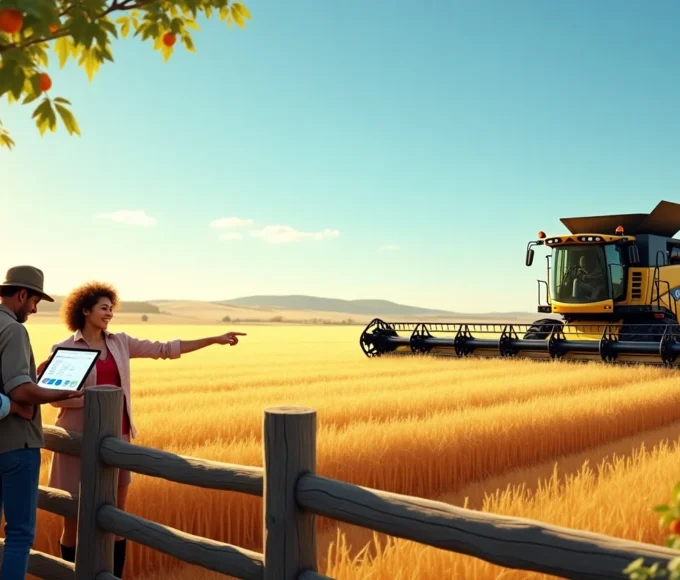
Leave a comment